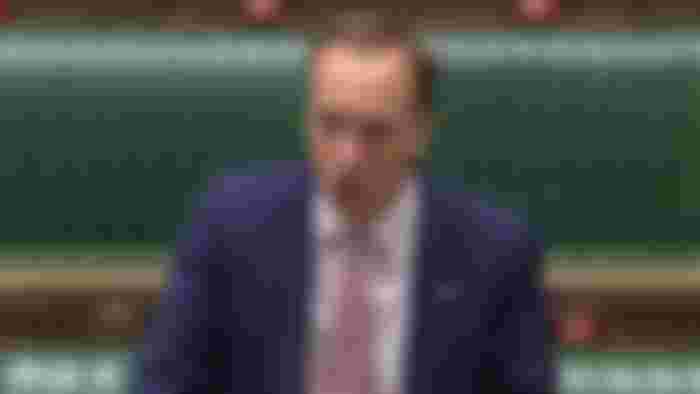Following a technical glitch, thousands of cases were not included in official figures last week after people who tested positive were not recorded when a master Excel spreadsheet reached its maximum size.The updated figures show the coronavirus infection rate has more than doubled in some areas of England in the week from 24 September to 1 October.
Manchester, which has recorded 2,885 cases in a week, currently has the highest infection rate of 526.8 cases per 100,000 people.
This means that the city's infection rate has more than doubled within seven days as it previously stood at a rate of 238.3 cases per 100,000 people.
Advertisement
Liverpool has the second highest infection rate, with an increase from 260.1 to 489.7 cases per 100,000 people and a total of 2,423 cases recorded over a seven-day period.
Knowsley, a borough of Merseyside, had the third greatest increase in infection rate, up from 264.1 to 480.7 cases per 100,000 people, as well as 719 additional cases.
Burnley, in Lancashire, followed behind with an increase of 384 cases, putting the infection rate up from 328.7 to 433.8.
The ten areas which currently have the highest infection rate include:
Manchester - 526.8 cases per 100,000 people
Liverpool - 489.7 cases per 100,000 people
Knowsley - 480.7 cases per 100,000 people
Burnley - 433.8 cases per 100,000 people
Newcastle upon Tyne - 418.1 cases per 100,000 people
St. Helens - 316 cases per 100,000 people
Nottingham - 305.1 cases per 100,000 people
Sefton - 305 cases per 100,000 people
Halton - 301.3 cases per 100,000 people
Pendle - 293.2 cases per 100,000 people
Some of the biggest increases in infection rates were seen in areas with large student populations, such as Nottingham, Sheffield and Exeter.
The analysis shows a particularly sharp rise in Nottingham, where the infection rate more than quadrupled from 68.6 to 305.1 cases per 100,000 people, with 1,010 new cases recorded in the week.

Public Health England (PHE) said the technical issue meant 15,841 cases, between 25 September and 2 October, were not included in the reported daily coronavirus cases.
Scientists have raised concerns that this may mean thousands of contacts of people who were not recorded on the government's list could have spread the virus in the last week.
The issue has also caused a delay in NHS Test and Trace being able to find the contacts of those who have tested positive for COVID-19 - in some cases this is a delay of around a week.
PHE said the outstanding cases were transferred to NHS Test and Trace "immediately" following the technical issue, with all tracers being assigned the cases by 1am on Saturday.
Breakdown of missing cases
Missing cases Original figure Actual total
25 September 957 6,874 7,831
26 September 744 6,042 6,786
27 September 757 5,693 6,450
28 September 0 4,044 4,044
29 September 1,415 7,143 8,558
30 September 3,049 7,108 10,157
1 October 4,133 6,914 11,047
2 October 4,786 6,968 11,754
Prime Minister Boris Johnson was unable to say on Monday morning how many contacts had not been identified.
He said: "I can't give you those figures. What I can say is all those people are obviously being contacted and the key thing is that everybody, whether in this group or generally, should self-isolate."
He added that the updated figures meant that the prevalence of the virus was where experts expected it to be and it would soon be clear if extra restrictions were having the intended impact.
Mr Johnson said: "The incidence that we are seeing in the cases corresponds to pretty much where we thought we were.
"And, to be frank, I think that the slightly lower numbers that we'd seen, you know, didn't really reflect where we thought the disease was likely to go, so I think these numbers are realistic."

Health Secretary Matt Hancock said: "This incident should never have happened but the team has acted swiftly to minimise its impact and now it is critical that we work together to put this right and make sure it never happens again."
He said that following "6,500 hours of extra contact tracing over the weekend", as of Monday morning "51% of the cases have now been contacted a second time for contract tracing purposes".
He went on to say that "outbreak control in care homes, schools and hospitals has not been directly affected because dealing with outbreaks in these settings does not primarily rely on this PHE system".
Shadow health secretary Jonathan Ashworth said the error was "shambolic", adding "people across the country will be understandably alarmed".


This problem has delayed the NHS test and Trace has been able to trace the contacts of those who tested positive for COVID-19 with a delay of about a week in some cases.